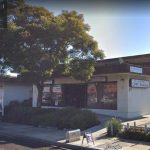
Pediatric BLS: Life Support for Children
When it comes to pediatric health care, the belief is that the earlier the intervention, the better the outcome. That’s why BLS classes in San Diego have become increasingly important over the years. BLS stands for Basic Life Support and it’s a fundamental training course designed to teach medical professionals how to properly administer life-saving support to patients, including those in pediatrics.
At Amerimed CPR, we offer comprehensive BLS classes in San Diego and throughout California. Our aim is to equip our students with the knowledge, skills, and confidence necessary to be able to perform basic life support in response to respiratory or cardiac arrest. At Amerimed CPR, we focus on teaching our students techniques specifically tailored for children, as well as updated protocols when resuscitating pediatric patients.
The first step of pediatric BLS is recognizing an emergency situation. Since infants and children can’t usually communicate as adults do, BLS classes in San Diego emphasize getting a full medical history on each patient upfront. Signs of cardiopulmonary arrest include gasping, apnea (not breathing), and cyanosis (skin turning blue). Most likely, if you encounter a child or infant who needs help due to cardiac arrest, you will need to start chest compressions before even attempting a rescue breath.
Our BLS classes in San Diego also provide guidance on correct hand placement for administering chest compressions on children. The two-finger technique is usually best for very young children; while with older children, using your whole hand is more effective. Compressions should be delivered at a rate of 100-120 beats per minute and they should be deep enough so that when released, the chest returns to normal size. In addition to performing chest compressions, our BLS classes also discuss how to correctly perform rescue breaths both for infants and children.
There are additional differences between adult and pediatric BLS. For instance, one difference lies in recognizing pulse rates. Adults have a much lower pulse rate than children and infants, which means that any time you check for a pulse in children or infants, you should be feeling for at least five seconds. Lastly, resuscitation efforts require considering airway shaping devices such as an oropharyngeal airway (OPA) or nasopharyngeal airway (NPA). Depending on the size and age of the child, these tubes allow for a more open airway to facilitate effective ventilation.
One of the most important aspects of pediatric BLS courses is learning how to respond in an emergency with a calm demeanor. It’s essential that you remain composed and confident if you ever find yourself needing to give life support to a child or infant. With the appropriate training through BLS classes in San Diego and understanding of these unique situations, you can rest assured knowing that you possess the tools needed to save lives when it really matters.
For more information about our BLS classes in San Diego and across California, contact Amerimed CPR today! Our goal is to provide our students with the gold standard in life-saving certification courses, giving them the confidence they need in times of crisis. With our professional instruction and comprehensive training materials, we’re sure you’ll emerge from our BLS classes with an expanded set of skills and peace of mind that you’ll be prepared to act quickly and effectively when someone needs your help the most.r

